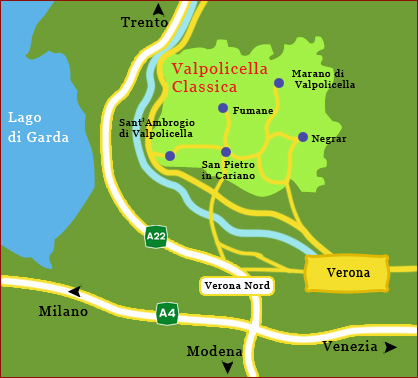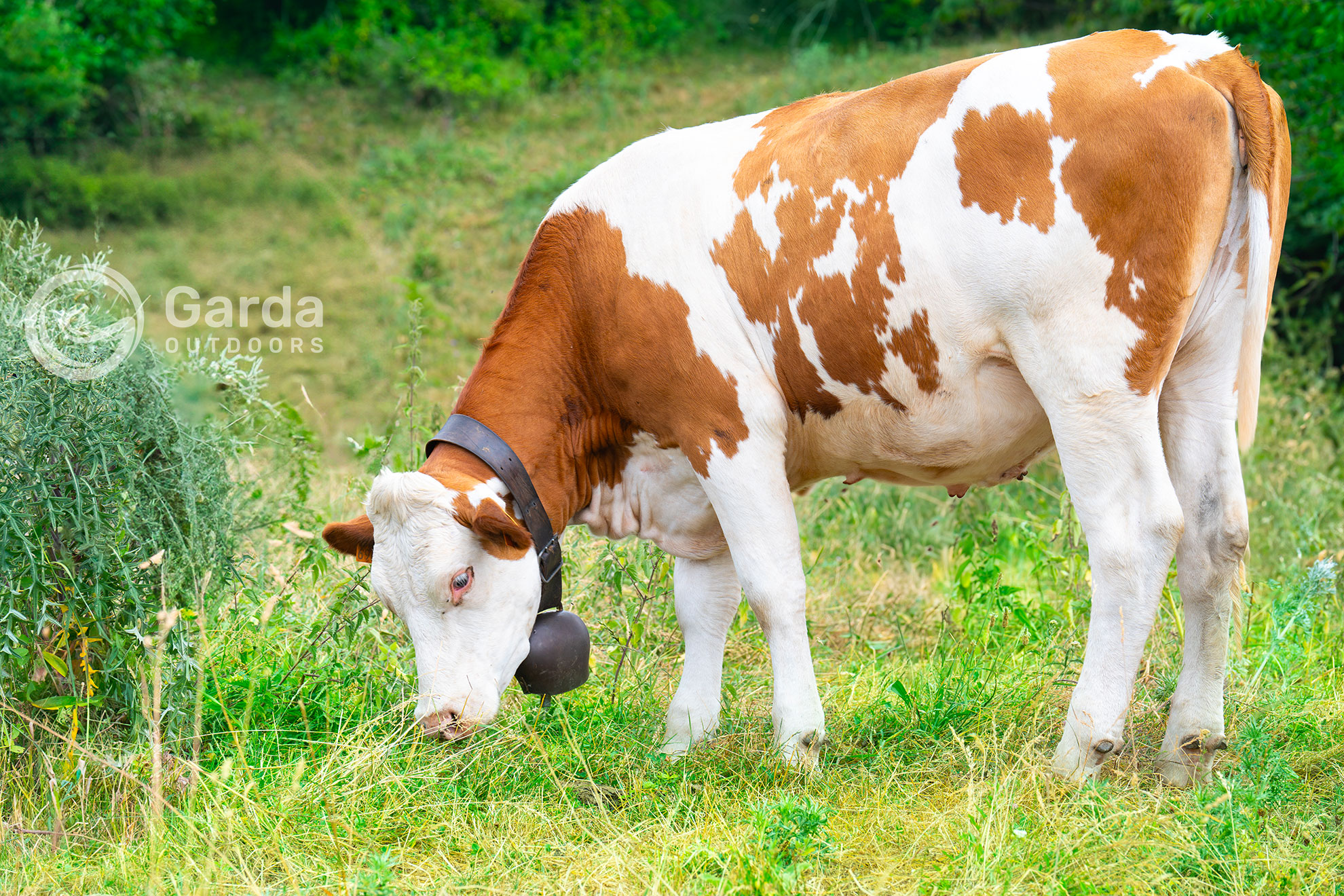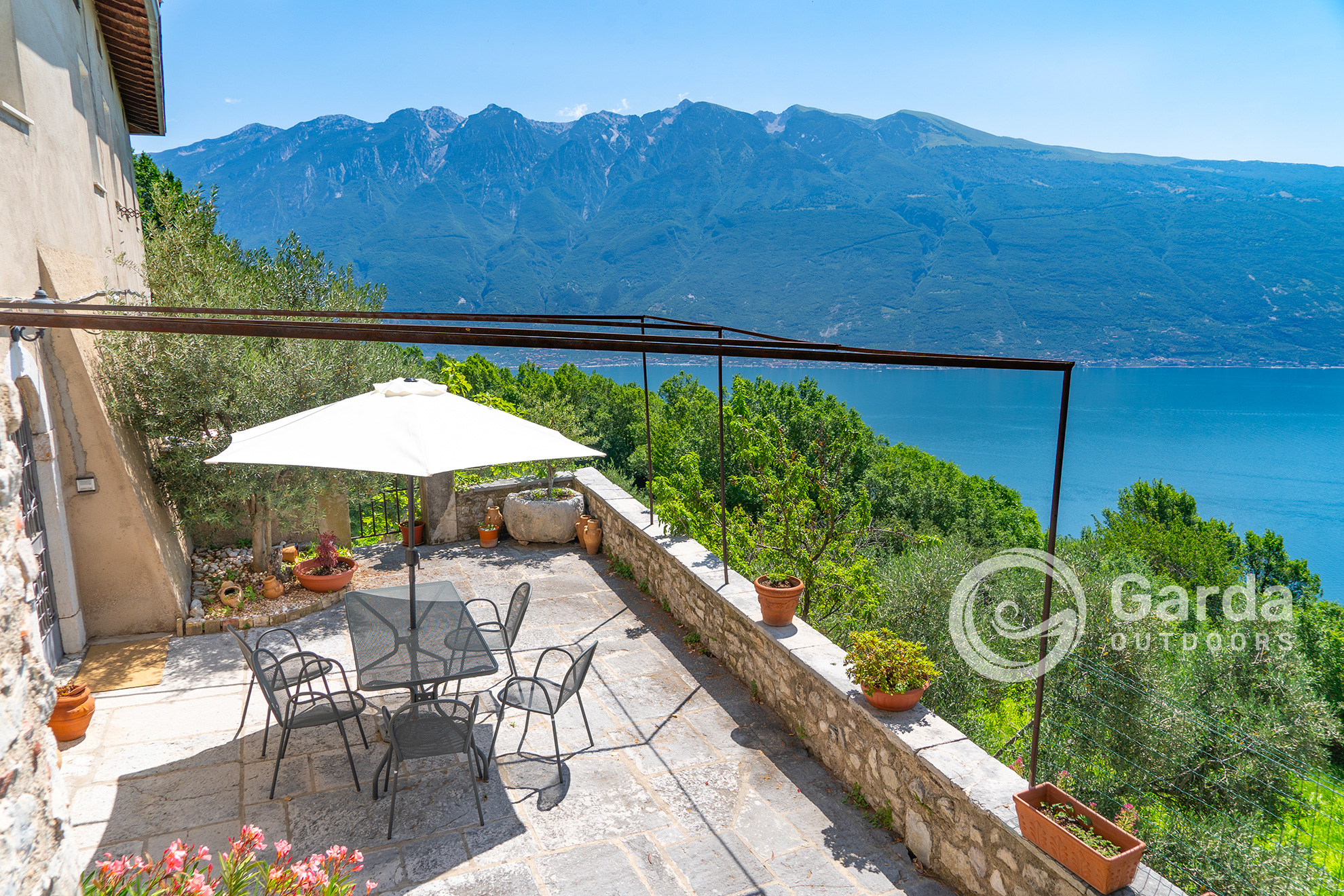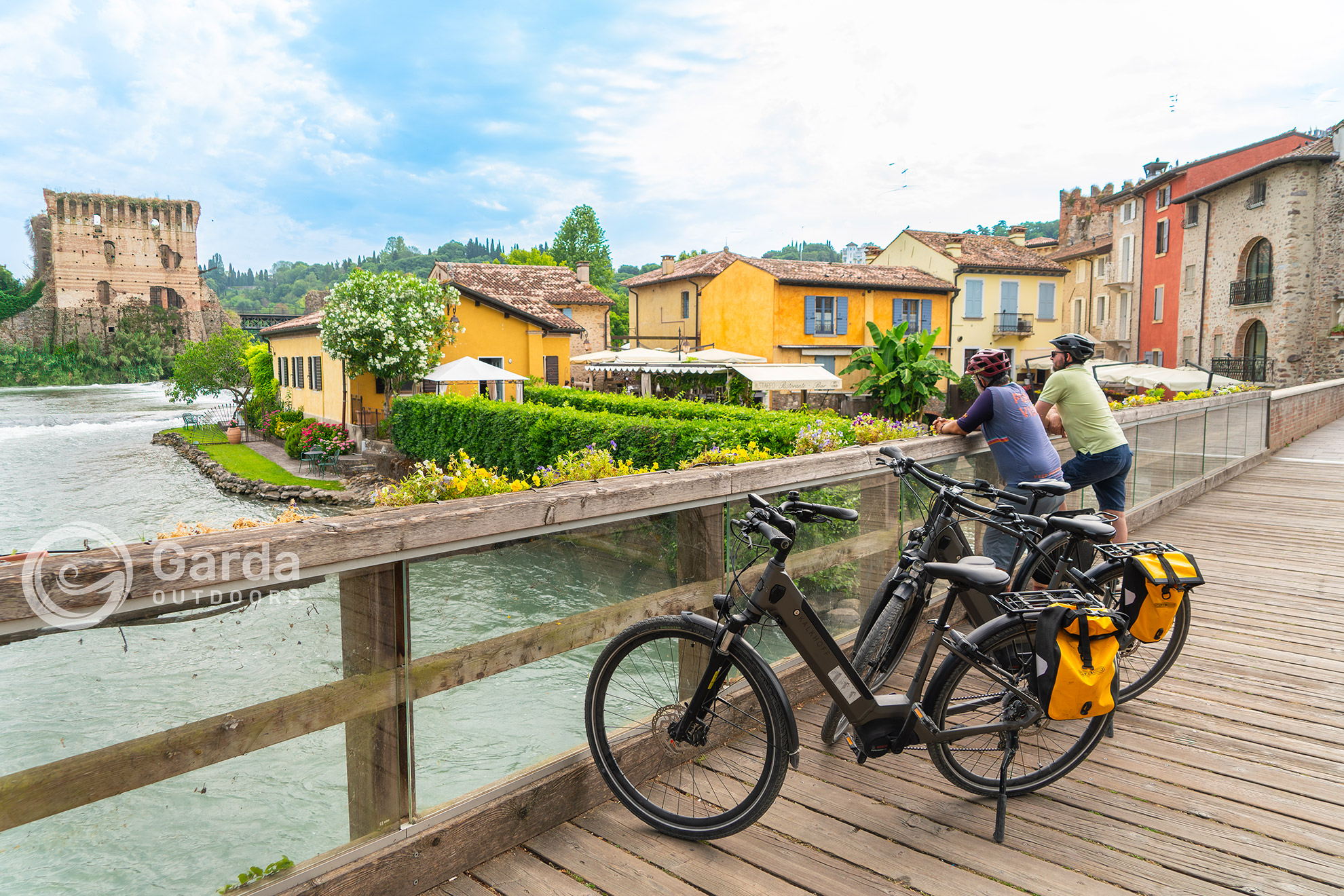Valpolicella is located north-west of Verona: a small region in which you can admire some of the world’s excellence in terms of architecture, landscape, food and wine.
Lying at the foot of the Veronese Prealps, Valpolicella extends over a territory of seven municipalities all in the Province of Verona: Sant’Ambrogio di Valpolicella, Fumane, Sant’Anna D’Alfaedo, Negrar, San Pietro in Cariano, Marano di Valpolicella and Pescantina . The area of this region can be divided into three areas with rather clear differences: the northernmost part is mainly mountainous and is a territory used purely for grazing; the intermediate area is hilly and there are countless vineyards; the southernmost area is flat, rich in water, and is mainly used for fruit and vegetable cultivation.
The reason why Valpolicella is mainly known in the world is given by the prestige of the wines that are produced there. Thanks to its position and the favorable climate that takes advantage of the abundance of water and the protection of the Alps, viticulture has been widespread here since Roman times and can boast several indigenous grape varieties.
It is also important for the extraction of red Verona marble, which we also find in many historical sites such as the Basilica of San Zeno in Verona.
From an architectural point of view, the landscape of Valpolicella is adorned with Venetian villas of great value and is embellished with capitals, churches, parish churches, districts and courtyards, which enrich the area with evidence of years of history.
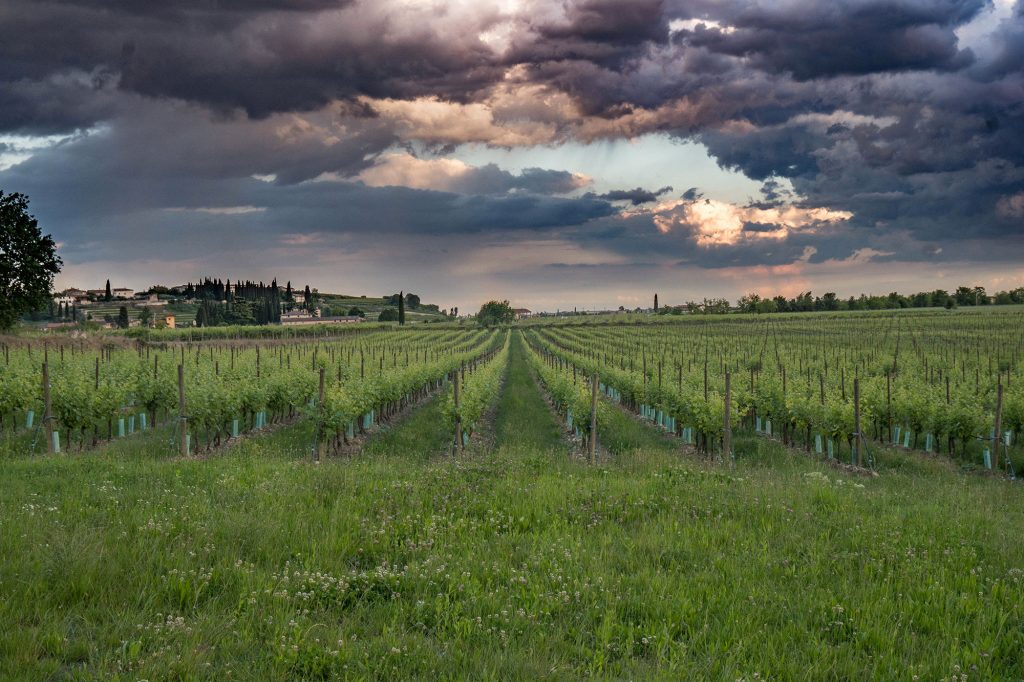
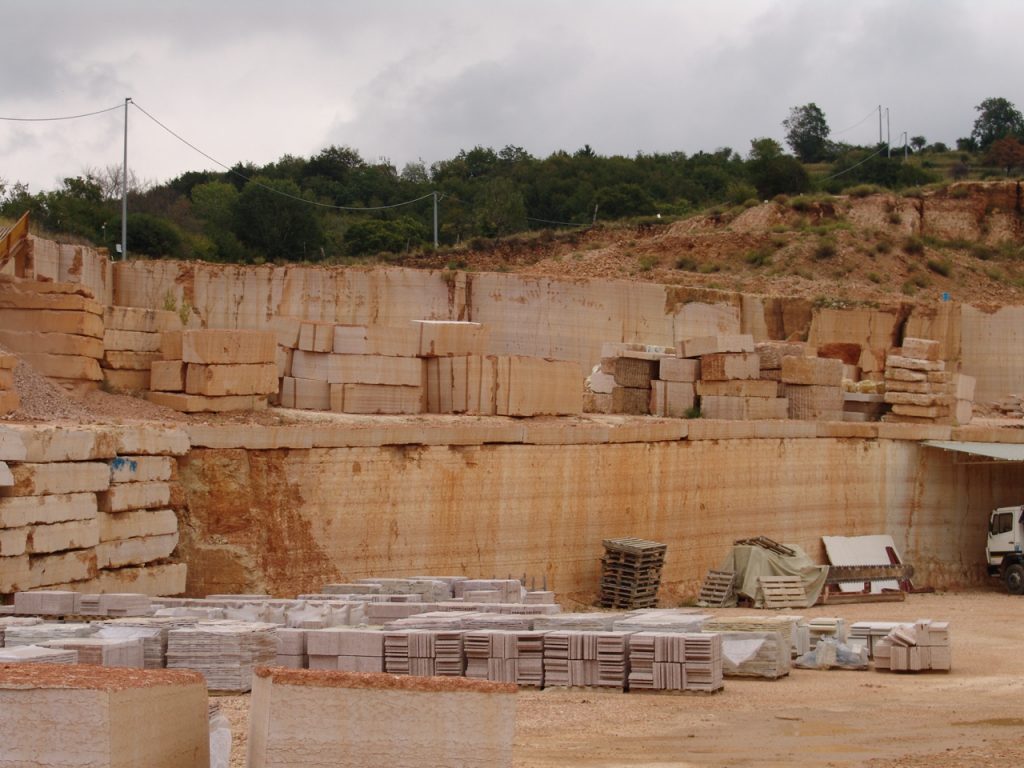
The wines of Valpolicella.
The best known wine is Amarone della Valpolicella, produced with Corvina and Rondinella grapes, with a characteristic garnet red color and a very marked taste.
Among the other wines of the area, the Valpolicella Classico, Superiore, Ripasso and the sweet Recioto are also very popular.
This great concentration of excellent wines has favored the development of food and wine tourism in the area: it is possible to visit numerous wineries where you can taste the wines and local products, as well as stay overnight in some of them or in one of the many ancient farmhouses. of the area, thus having a wonderful experience immersed in nature. You will discover the hospitality of its inhabitants and how important the link with the territory is.
Wine tour in a day trip in Valpolicella.
Various itineraries to discover Valpolicella through wine tours immersed in the heart of the historic cellars and small family-run niche ones. You will have the opportunity to speak directly with the producer to discuss the tasting and learn about the history of the vineyard. You will be guided by the experience of those who dedicate themselves to this memorable art of wine for their wisdom and passion.
“Very good!” you will think. But how to do it? Browsing the web will not help you live the experience described, because only those who live and know the area on a daily basis will be able to sew the experience most inclined to you, freeing you of all thoughts, driving license included! For more info we leave you in the hands of Romeo & Juliet guide.
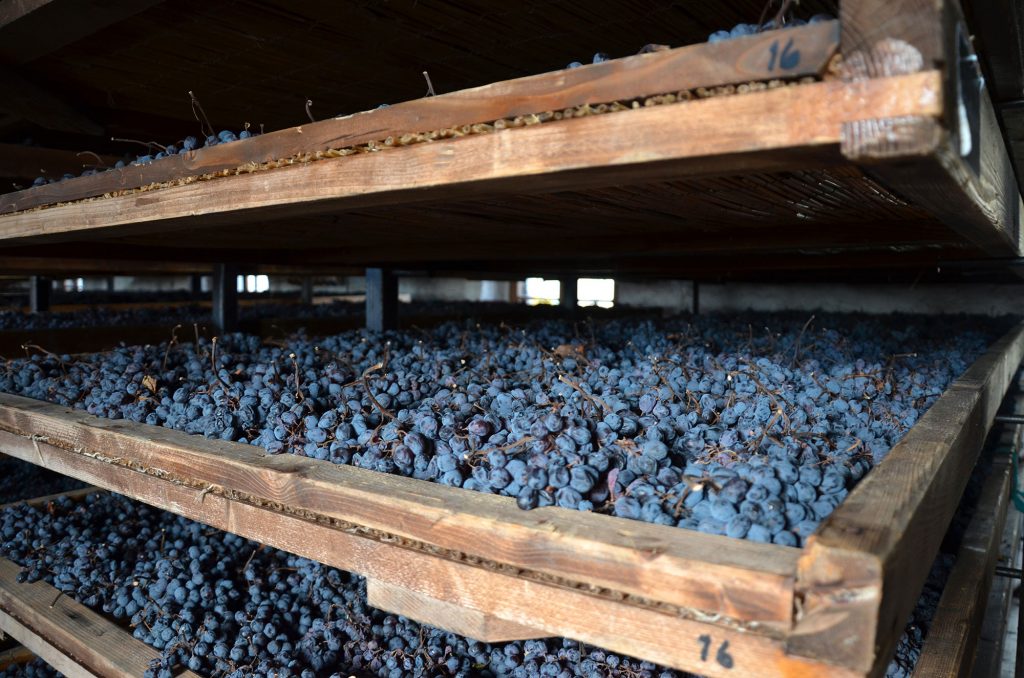
The Venetian villas of Valpolicella.
Scattered in the Valpolicella area are more than 80 Villas, often used as prestigious locations for events and weddings, often home to the renowned wine cellars of the same name and in many cases transformed into hotels and restaurants as well.
Among the most important we mention Villa Santa Sofia designed by the famous architect Andrea Palladio, the magnificent Villa Mosconi Bertani home to important literary salons, Villa Rizzardi with its beautiful Pojega garden, Villa della Torre with its spectacular fireplaces in the shape of large mouths, Villa Bertoldi in Negrar – Loc. Palazzo, Villa Giona sumptuous summer residence, Villa Serego Alighieri purchased in 1353 by Pietro Alighieri son of the poet Dante.
Parishes and churches of Valpolicella.
In this region you can also admire numerous parish churches, small churches with an adjoining baptistery.
Parish church of San Giorgio Ingannapoltron.
The best known is the “Pieve di San Giorgio Ingannapoltron“, a hamlet of Sant’Ambrogio di Valpolicella which is one of the most beautiful villages in Italy. Ingannapoltron translated from the Veronese dialect – “deceives the lazy” – is the nickname due to the fact that in the past pilgrims, seeing the town from the plain, believed they could reach it quickly. In reality the road was very steep and full of hairpin bends.
This parish church is located on a hill from which you can admire a beautiful view over the Fumane valley and can only be visited on foot (cars can be parked along the main road that climbs the hill). The town square is a sort of panoramic viewpoint over the valley overlooked by an ancient building which still houses the town bar today. A little further on the delightful Romanesque parish church, whose original building of the eighth century was built on a place previously used for pagan worship. The parish church was then rebuilt in the 11th century and represents one of the most interesting examples of Romanesque architecture in the Verona area. One of the highlights of this church is undoubtedly the external cloister, which preserves splendid columns with capitals sculpted with figures and animals, while inside it is possible to admire splendid frescoes and a ciborium dating back to the Lombard period, that is a canopy in finely carved stone with Celtic knots and zoomorphic and plant figures, located on the eastern altar. Next to the church are the Antiquarium Museum and the tourist office.
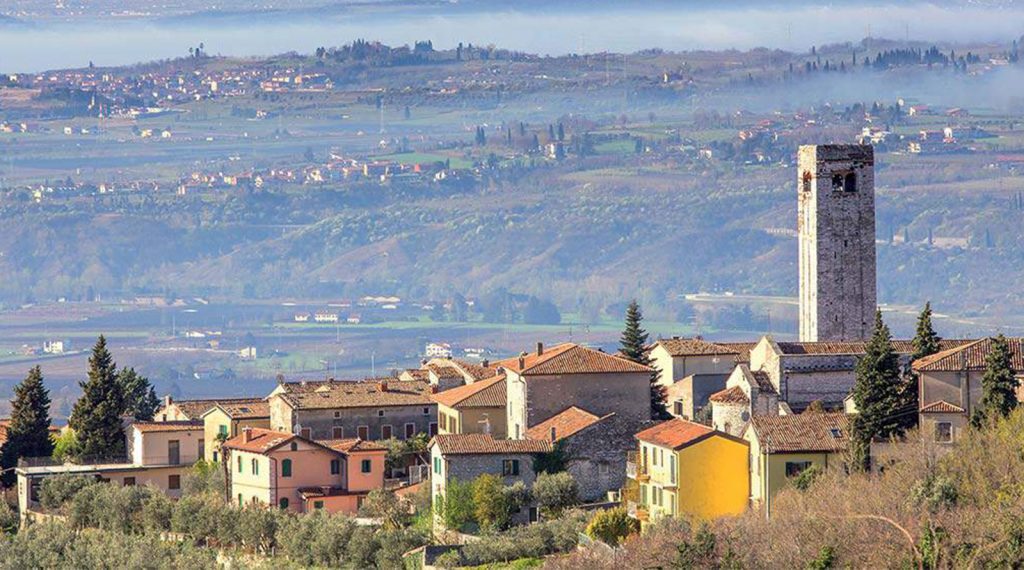
Parish church of San Floriano.
Surely one of the most beautiful churches in the area, the Romanesque church of San Floriano, which is located right on the square of this hamlet of San Pietro in Cariano, close to the main road, has existed since the year 905.
Even today it has a façade in tuff blocks completely intact with a traditional structure with three naves, while the tuff and terracotta bell tower recalls the Veronese style of the time. The interior of the church is very interesting, with wooden sculptures, canvases and a baptismal font carved out of a single block of red marble.
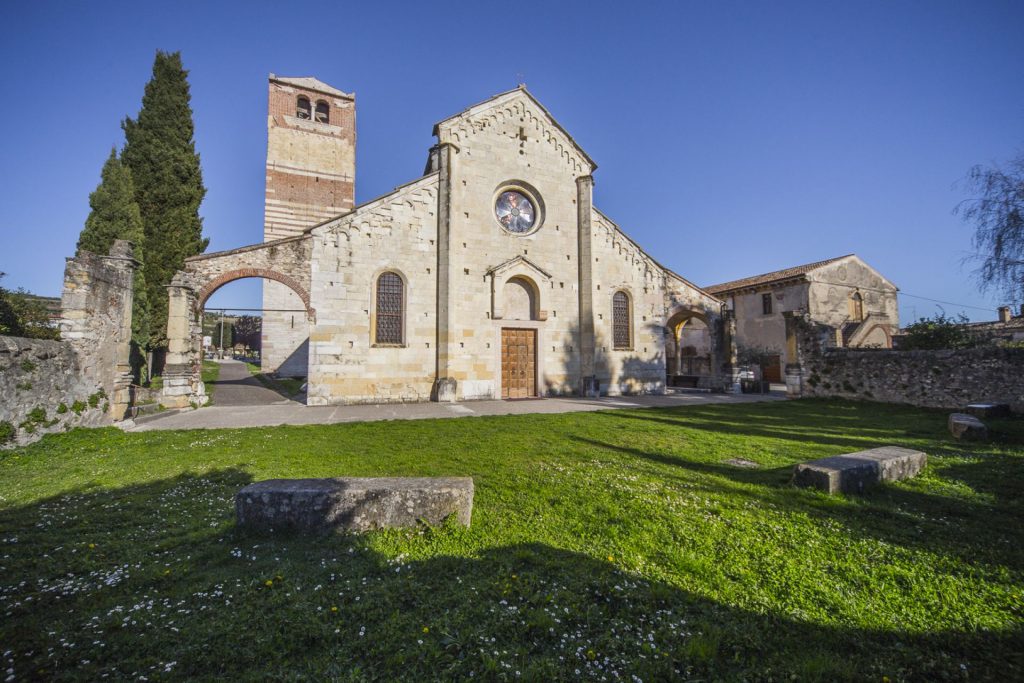
Sanctuary of the Madonna de La Salette.
It is a place dear to the Fumanese and you will happen to see it from the valley, because it appears as a white spot in the middle of the woods on the hill overlooking the town. It can be reached on foot or by car and the churchyard of the sanctuary offers perhaps the most beautiful view of Fumane.
The sanctuary, built on the rocky wall of Colle Incisa overlooking the town, was built in 1859 following a vote, when Fumane was threatened by a disease of the vineyards. Its shapes recall the most famous temple near Grenoble in France.
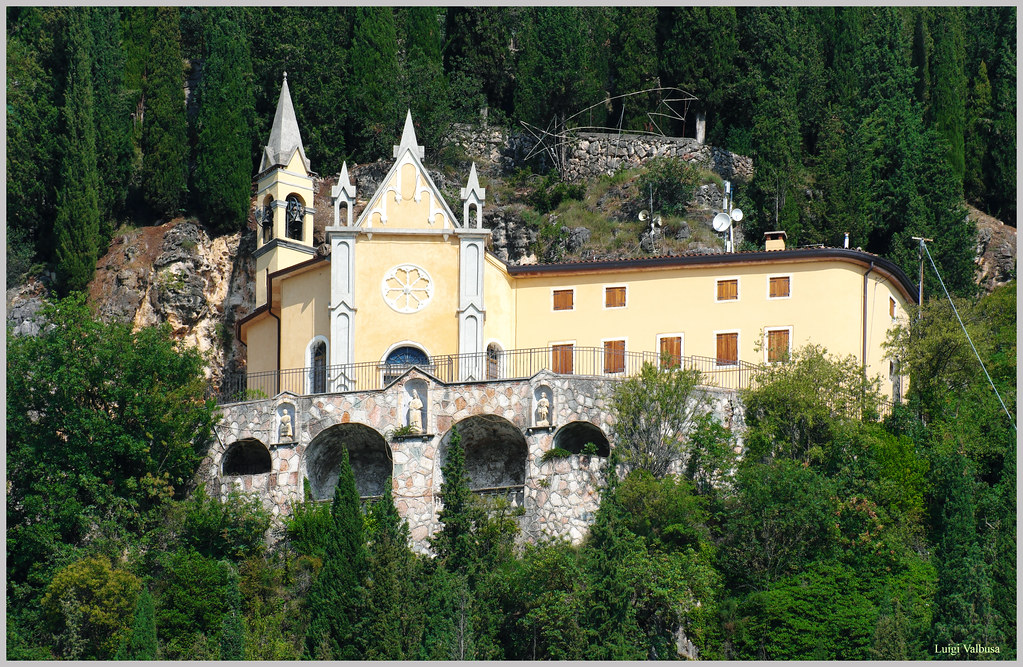
Excursions in Valpolicella.
But Valpolicella is not just wine, villas and culture; it is also a fantastic land for lovers of walking, cycling and hiking thanks to the numerous well-marked paths that allow you to cross it far and wide, admiring the splendid pre-Alpine landscape and enjoying the nature of its hills, beautiful in every season.
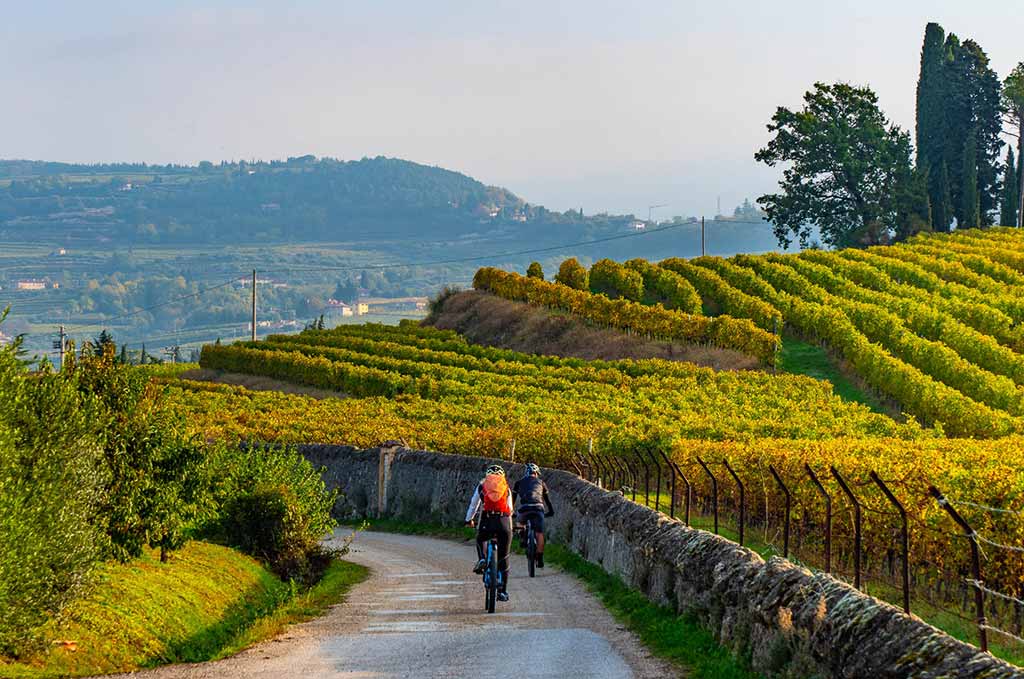
Throughout the area there are many recreational activities that can also entertain families with children, such as horse riding, educational farms, rafting in one of the many streams that descend from the peaks to the valley or the Tibetan Bridge of Val Sorda whose path starts from Marano di Valpolicella.
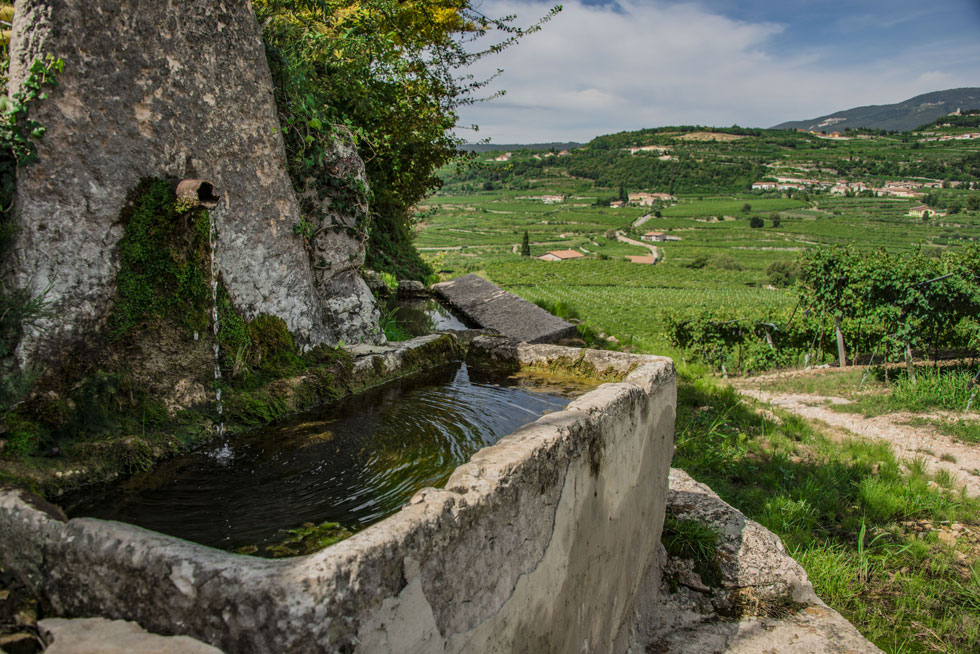
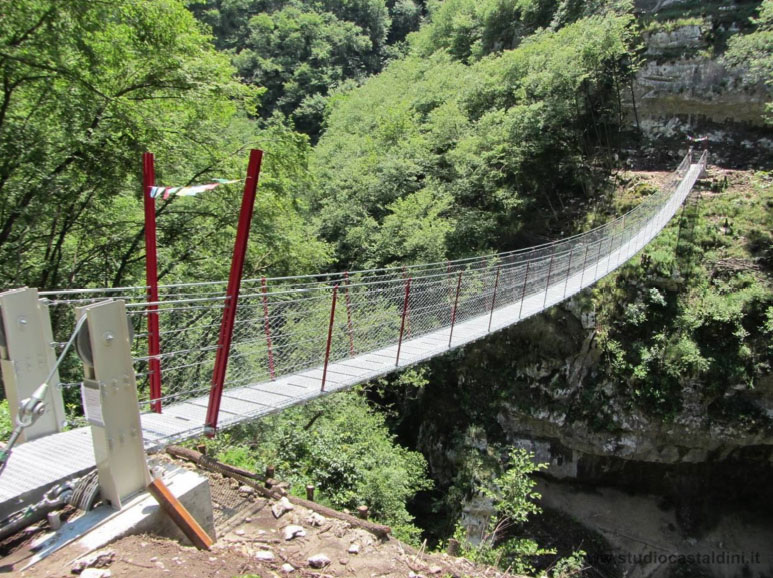
Let’s not forget that Valpolicella is at the gates of Lessinia, a magnificent area where you can explore many sites as well as venture out for trekking in all seasons. To know all the unmissable spots in Lessinia, including the Molina Waterfalls Park, the Fumane Grotto and the Veja Bridge, you can click here.
Valpolicella is also an excellent starting point for exploring the whole of Veneto: the peaks of the Alps are less than an hour away by car, as is Venice, while Verona and Lake Garda are very close. Among the small towns reachable from Valpolicella we also mention Soave, an architectural jewel with its medieval streets and its fascinating Castle, as well as home to one of the most popular white wines in the world: Soave Doc.
How to get to Valpolicella.
By car.
For those traveling on the A4 – Autostrada Serenissima Milan – Venice, the recommended exit is Verona Sud. From Verona Sud, head towards Borgo Trento. Here take the Provincial Road 1 towards Trento and Valpolicella. At the junction for Trento keep right, to go towards Sant’Ambrogio di valpolicella. Following the main road, you cross the villages of Parona, Arbizzano, Santa Maria di Negrar, Pedemonte, San Floriano, San Pietro in Cariano, Bure up to Gargagnago.
Traveling on the A22 – Modena – Brennero motorway: exit at Verona Nord. Take the SS12 towards Trento and Valpolicella for about 10 km. At the roundabout, take the third exit towards Sant’Ambrogio di Valpolicella for about 1 km.
On the train.
There are three railway lines that arrive at Verona Porta Nuova Station:
Milan – Venice railway line
Bologna – Brenner railway line
Verona – Mantua – Modena railway line
From the forecourt of Verona Porta Nuova station, take urban bus 21 which leads to Negrar and San Pietro In Cariano. Alternatively, there are the suburban couriers directed to the municipalities of historic Valpolicella: Negrar di Valpolicella, Fumane, Marano, San Pietro In Cariano, Sant’Ambrogio di Valpolicella.
By plane.
The Catullo Airport of Verona-Villafranca is 12 km from Valpolicella. It is connected to the Verona Porta Nuova railway station by a shuttle bus with departures every 20 minutes. From there all buses leave for the various towns of Valpolicella.
See you next time dear Outdoors!
Silvia Turazza – Garda Outdoors editorial staff
